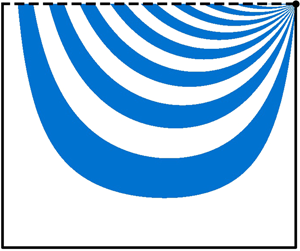Article contents
Flow and residence time in a two-dimensional aquifer recharged by rainfall
Published online by Cambridge University Press: 23 April 2021
Abstract

We investigate the flow of water in a two-dimensional laboratory aquifer recharged by artificial rainfall. As rainwater infiltrates, it forms a body of groundwater which can exit the aquifer only through one of its sides. The outlet, located high above the aquifer bottom, drives the flow upwards. Noting that the water table barely departs from the horizontal, we linearize the boundary condition at the free surface, and solve the flow equations in steady state. We find an approximate expression for the velocity potential, which accounts for the shape of the streamlines, and for the propagation of dye through the aquifer. Based on this theory, we calculate the travel time of water through the experiment, and find that its distribution decays exponentially, with a characteristic time that depends on the shape of the aquifer. We find that the hydrodynamic dispersion that occurs at the pore scale does not matter much for this distribution, which depends essentially on the geometry of the groundwater flow.
JFM classification
Information
- Type
- JFM Papers
- Information
- Copyright
- © The Author(s), 2021. Published by Cambridge University Press
References
REFERENCES
- 5
- Cited by


